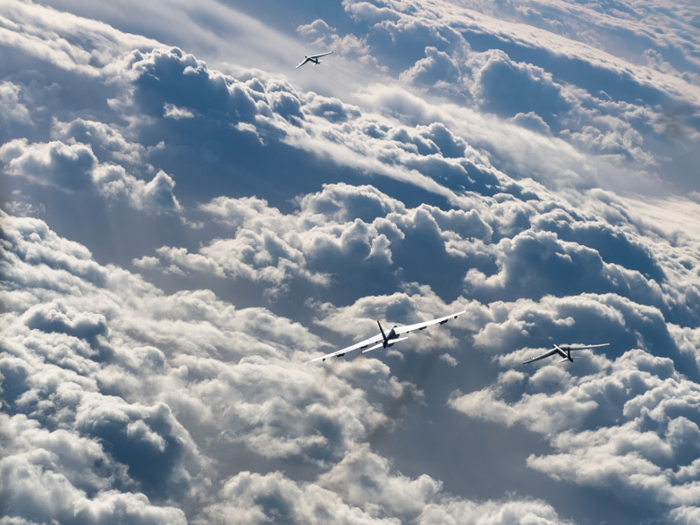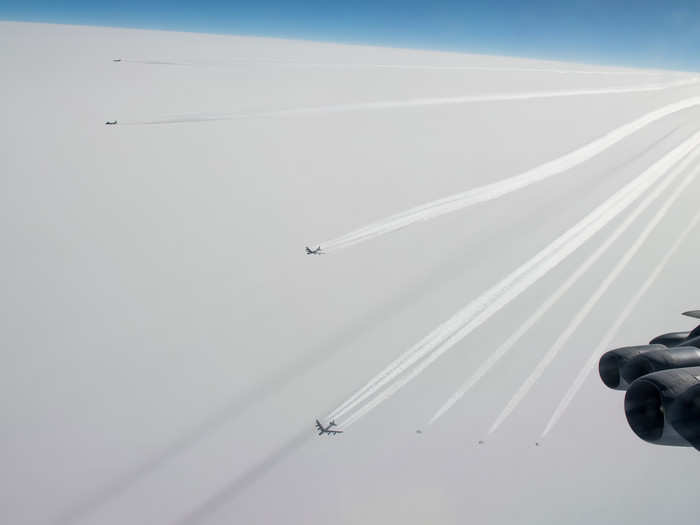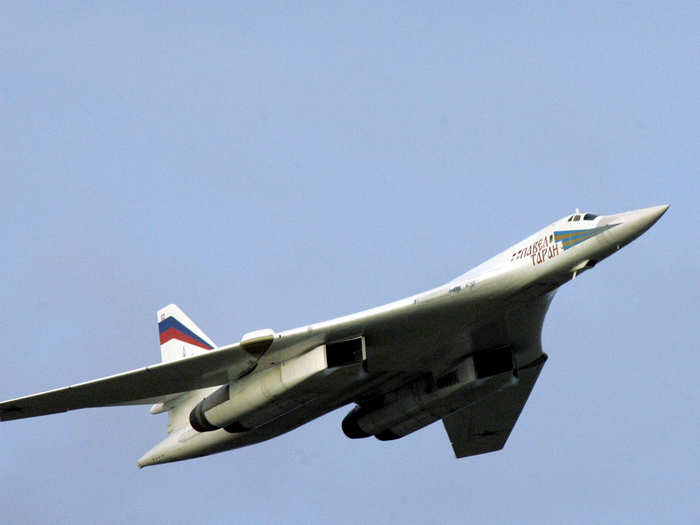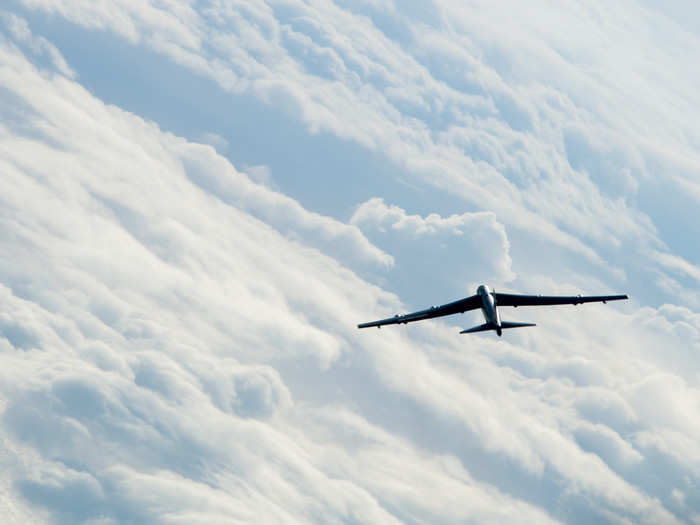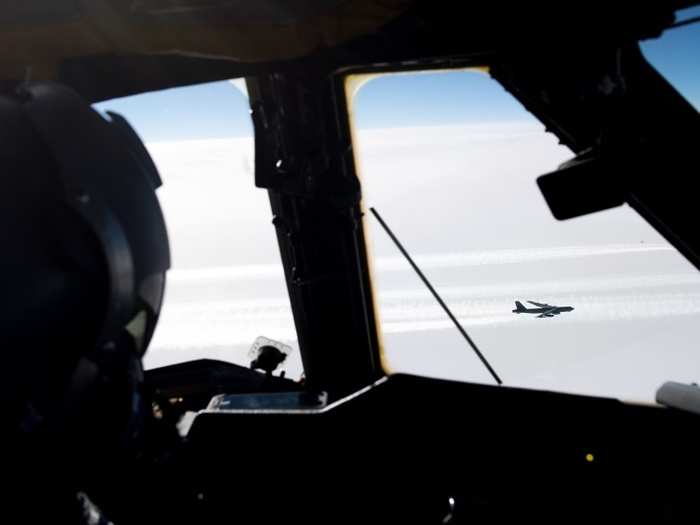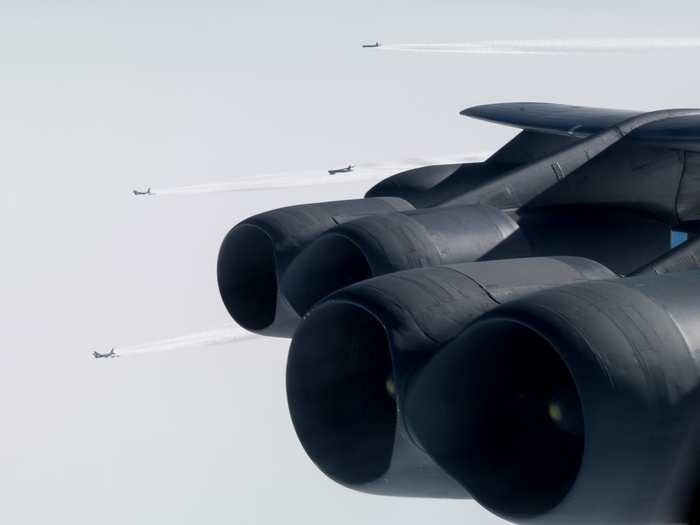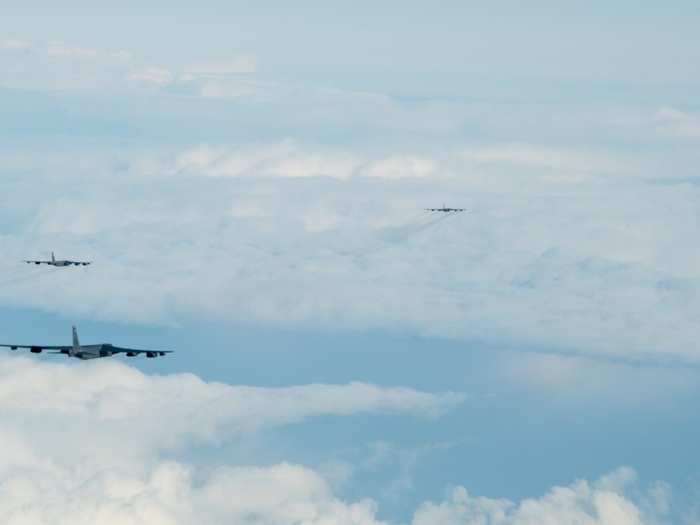With a half-dozen B-52s in Europe, the US military currently has more of these bombers operating there than it has at any time since 2003. Noticeably on edge, Russia has been highly critical of the ongoing training exercises.
While the US military insists the flights demonstrate US "commitment to allies and partners through the global employment of military forces," the Kremlin has argued that US and NATO actions are detrimental to regional security and stability.
Source: Military.com, Fox News
On March 28, five US B-52s operating out of RAF Fairford drilled alongside Norwegian F-16s in the vicinity of the Norwegian Sea.
On the same day, two Russian Tu-160 Blackjack bombers, accompanied by MiG-31 interceptor aircraft, conducted drills over the Norwegian Sea, the Russian Defense Ministry said.
While US bombers have been flying training in northern Europe, Russian Tu-160 and Tu-95 bombers have been conducting exercises nearby by way of the Barents Sea.
A Norwegian military spokesperson told The Barents Observer that Russian bomber flybys are "neither sensational nor abnormal." She said that Norwegian fighters were scrambled to identify the bombers when they passed by on March 28.
Sources: The Barents Observer, TASS, Sputnik
Russia has repeatedly scrambled fighters to intercept B-52 bombers training in Europe, and NATO countries have, in turn, sent aircraft to intercept Russian bombers.
British Royal air force aircraft intercepted the Russian Tu-160 Blackjack bombers over the North Sea, the British Defense Ministry said in a statement.
US Air Forces in Europe told Business Insider that interactions with Russian aircraft have been largely professional.
As US and NATO troops trained together in Norway in late October and early November during the alliance's largest exercise in years, Russia decided to hold missile drills in the Norwegian Sea, not far from NATO forces.
It is unclear how long the US B-52 bombers will be in Europe.
Frequent encounters between Russian and US aircraft in the region, which have sometimes been dangerously close, have been characterized as a return to Cold War behavior, raising concerns that such interactions could led to accidents or fatalities and potentially escalate.

